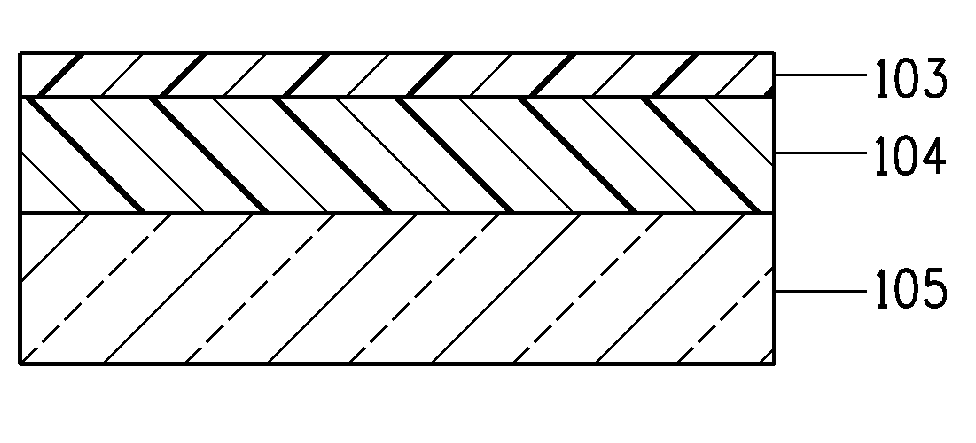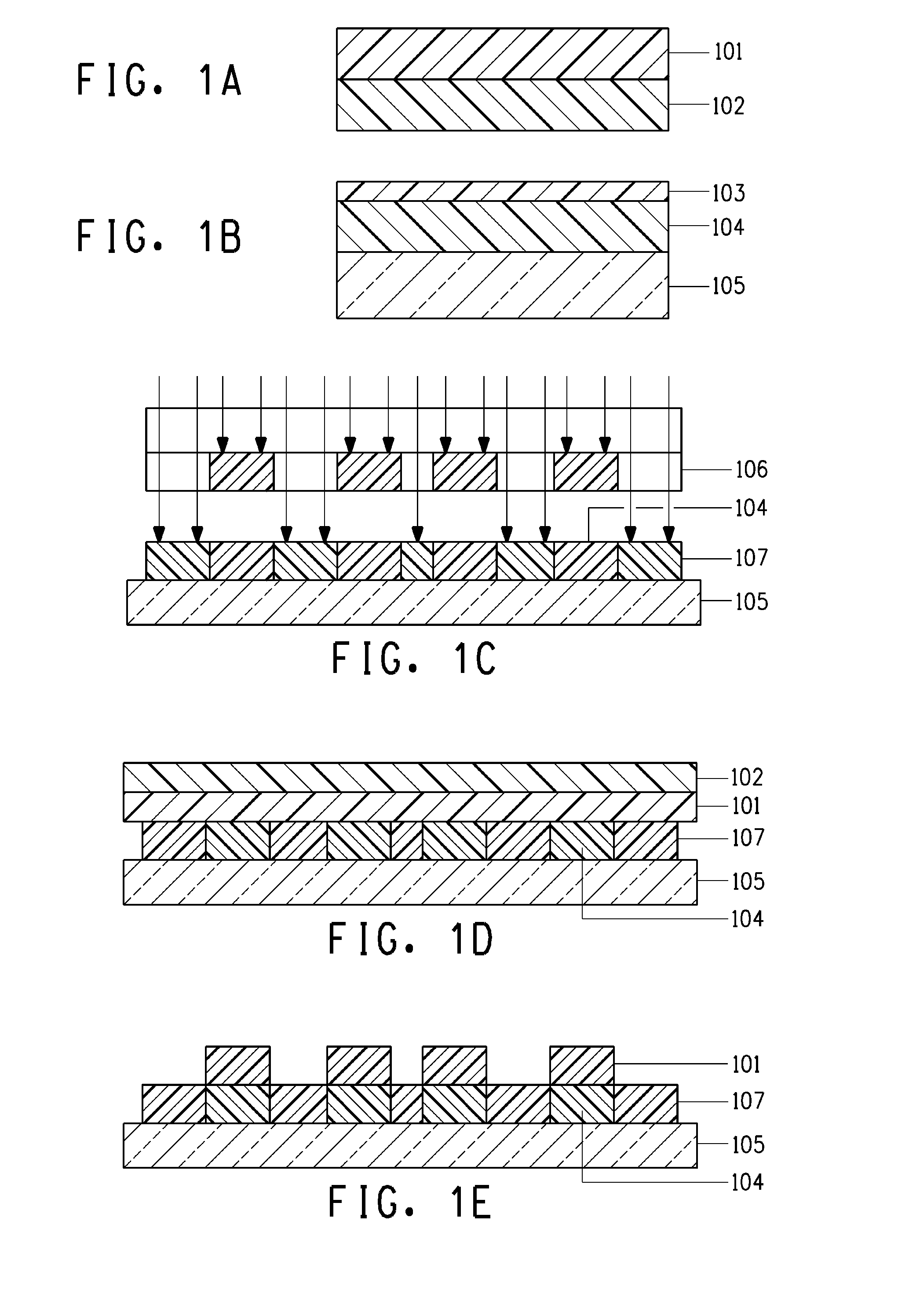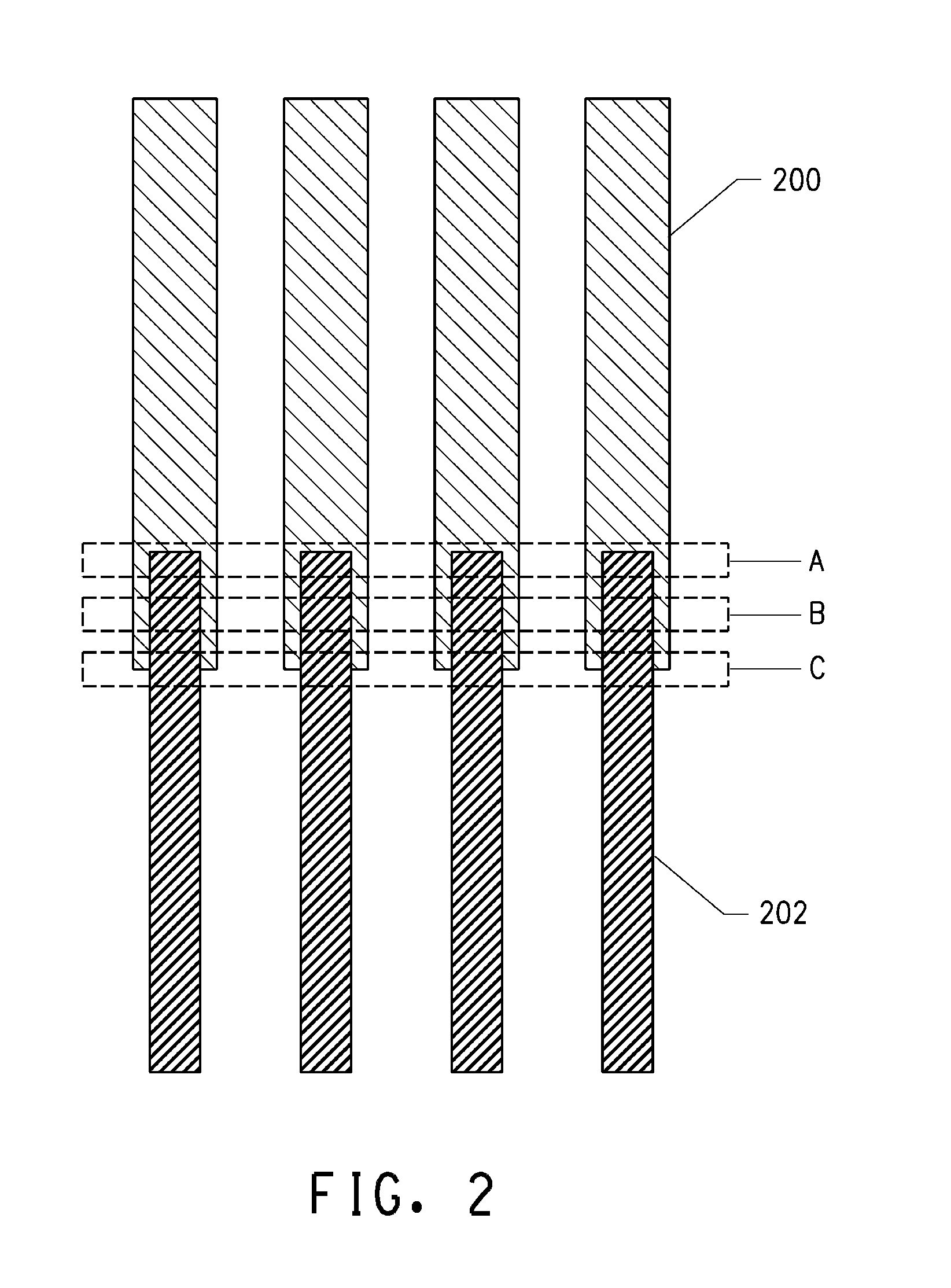Method for forming fine electrode patterns
a fine electrode and pattern technology, applied in the manufacture of electrode systems, electric discharge tubes/lamps, instruments, etc., can solve the problems of significant migration problem, increased sensitivity to metal migration, and substantial investment in plants and equipmen
- Summary
- Abstract
- Description
- Claims
- Application Information
AI Technical Summary
Problems solved by technology
Method used
Image
Examples
example 1
[0048]1. A photosensitive silver paste comprising silver powder, glass frit, an organic binder, monomers, a polymerization initiator and a solvent was printed onto a glass substrate using a screen, and was dried for 5 minutes at 80° C. The paste was exposed to parallel 365 nm UV rays at 400 mJs, using a negative-type photomask for electrodes. The paste was then developed using a 0.4% aqueous solution of Na carbonate, to yield an electrode pattern.
[0049]2. After development, the electrode pattern was pre-fired at 450° C. in order to increase the film strength of the electrodes.
[0050]3. A transfer film having an adhesive surface was affixed using a hot laminator, at 5 kg / cm and 120° C., onto the substrate having the electrodes formed thereon, in such a manner that the transfer film overlapped with the end portion of the electrode pattern. A cover sheet was disposed on the surface of the transfer film. The transfer film was exposed to parallel 365 nm UV rays at 20 mJs, using a positive...
example 2
[0052]Electrodes were formed in the same way as in Example 1, but omitting herein the preliminary firing (process 2).
PUM
| Property | Measurement | Unit |
|---|---|---|
| Distance | aaaaa | aaaaa |
| Distance | aaaaa | aaaaa |
| Width | aaaaa | aaaaa |
Abstract
Description
Claims
Application Information
 Login to View More
Login to View More - R&D
- Intellectual Property
- Life Sciences
- Materials
- Tech Scout
- Unparalleled Data Quality
- Higher Quality Content
- 60% Fewer Hallucinations
Browse by: Latest US Patents, China's latest patents, Technical Efficacy Thesaurus, Application Domain, Technology Topic, Popular Technical Reports.
© 2025 PatSnap. All rights reserved.Legal|Privacy policy|Modern Slavery Act Transparency Statement|Sitemap|About US| Contact US: help@patsnap.com



